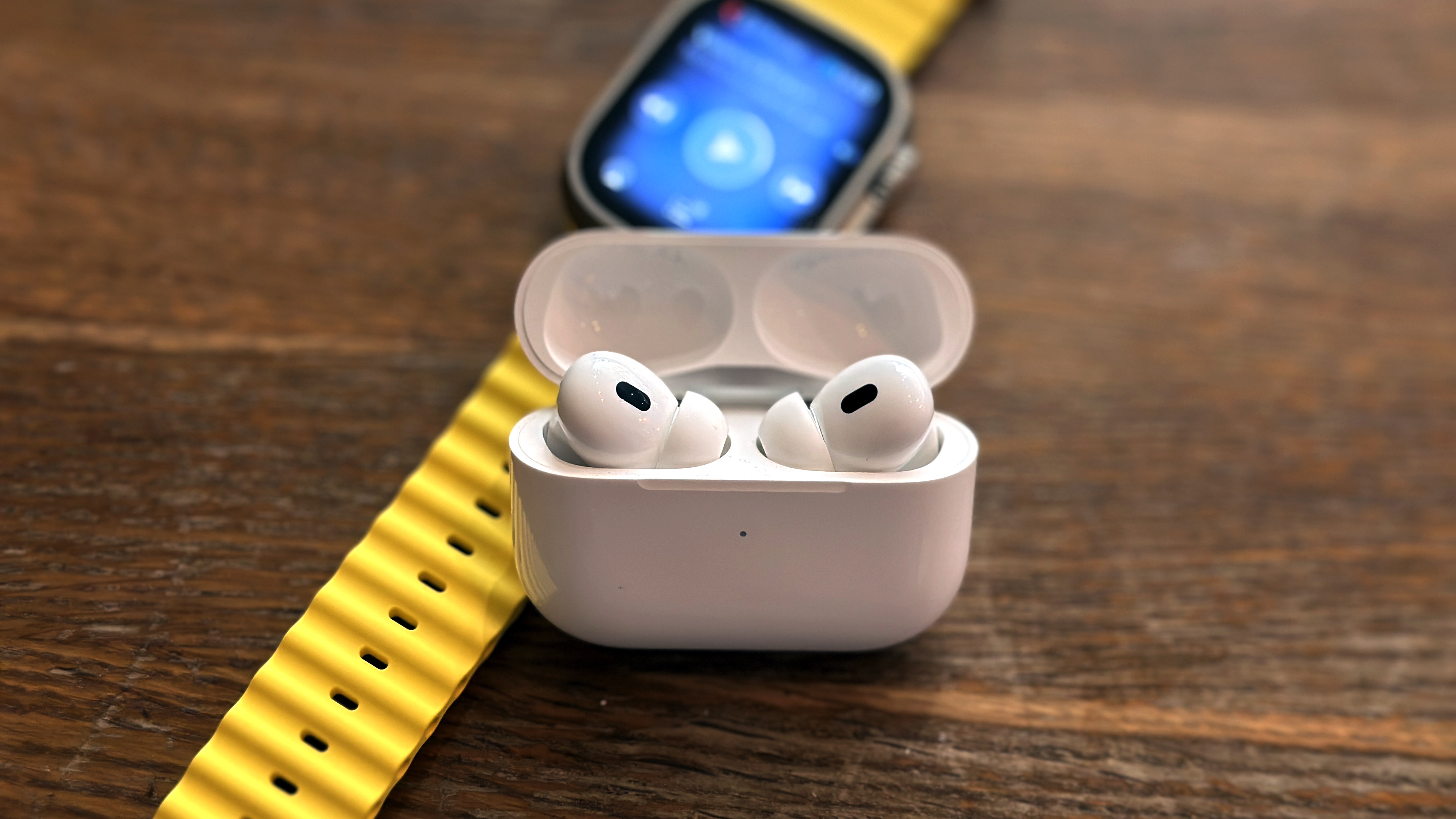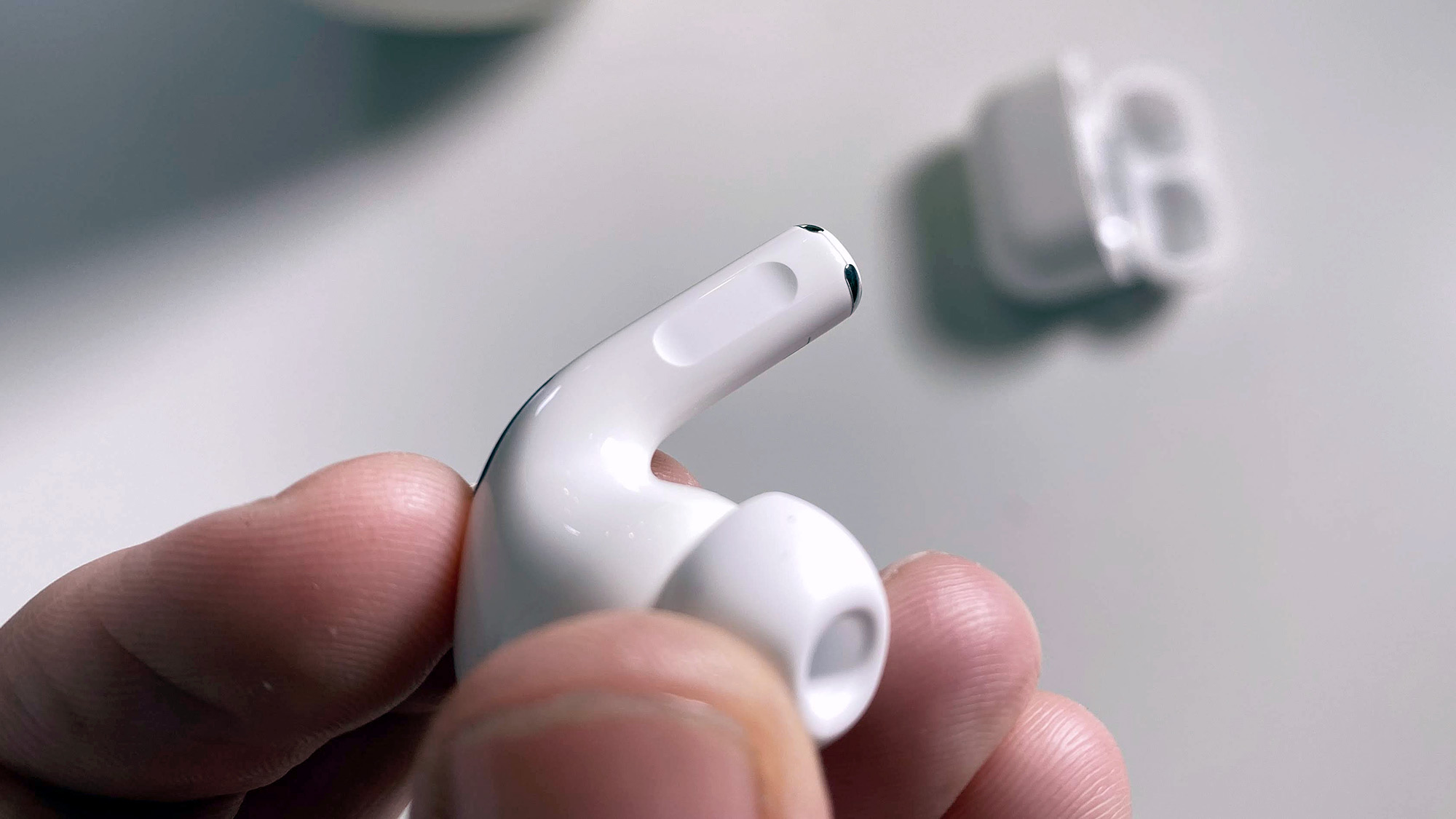Apple AirPods (2019) vs AirPods Pro 2: which wireless earbuds are better?
The Apple AirPods Pro 2 bring noise cancellation to the original Apple AirPods
Apple's AirPods Pro 2 are a higher-end version of the Apple AirPods (2019), with added noise cancellation and better sound quality. They cost more, but come packed with additional features - including adaptive EQ, active noise cancellation, and support for Spatial Audio.
Pros
- Added noise cancellation
- More comfortable
- Dolby Atmos Spatial Audio is fantastic
Cons
- More expensive
The Apple AirPods (2019) remain decent wireless earbuds. There isn't a huge difference in audio performance, but they're less comfortable and don't have the extra features. Still, their advancing age means you can often find decent discounts, making them great value for money.
Pros
- Similar audio performance
- Similar battery life
- Great value for money
Cons
- Less comfortable
- No extra features
Are you struggling to choose between the Apple AirPods (2019) vs AirPods Pro 2? We understand why you’re drawn to these two pairs of the best Apple headphones, but there are some key differences you need to know about.
The original Apple AirPods are instantly recognizable and very popular. There are now three versions and here we're looking at the second generation launched in 2019. Whereas the AirPods Pro 2 represent a culmination of years’ worth of work on true wireless tech, which means it's best to think of them as a higher-end version of the Apple AirPod earbuds – and they have a higher price tag to match.
The AirPods Pro 2 are more comfortable and come with a range of superb features, including adaptive EQ, active noise cancellation, and support for Spatial Audio. That’s why they made our round-up of the best true wireless earbuds of 2022.
In this comparison, it might seem like we’re suggesting the AirPods Pro 2 are always the better choice than the regular AirPods (2019). But it's not that simple. They’re way more expensive than the standard AirPods, which led many people to wonder if it’s worth upgrading to the AirPods Pro 2 or if they should stick to the cheaper AirPods that Apple updated in 2019.
To learn more about both pairs of buds, look at our Apple AirPods (2019) review and our Apple AirPods Pro 2 review. But if you’re short on time, read on for the key differences between the two to help you find out which AirPods model is right for you.

Difference #1: The AirPods Pro 2 have noise cancellation
The most noticeable difference between the two earbuds is that the AirPods Pro 2 use active noise cancellation rather than relying only on passive noise reduction.
The level of noise cancellation with the Pro 2 buds can be customized and even set to 'Transparency Mode', which allows you to hear what's happening around you without taking the headphones out of your ears.
Sign up for breaking news, reviews, opinion, top tech deals, and more.
Unfortunately, the regular AirPods don't offer any level of active noise cancellation. Instead, there's a noise reduction effect thanks to the seal they create within your ear canal. However, this effect is negligible because they don't have silicone or memory foam ear tips.
Difference #2: The AirPods Pro 2 are water-resistant
If you want to take your Apple earbuds to the gym, go with the more expensive AirPods Pro 2. They have an IPX4 rating, which means they're sweat- and water-resistant compared to the non-water-resistant AirPods.
Now, that doesn't mean you should take your new high-end AirPods Pro 2 in the pool with you – if they fall out or stay submerged for too long, they'll get ruined. If you're looking for something you can take into the pool, you'll need a pair of the best swimming headphones instead.

Difference #3: The AirPods Pro 2 have custom eartips
For the perfect fit, the AirPods Pro 2 offer more customization than the one-size-fits-all Apple AirPods. Inside the box, you’ll find four different ear tips, and if you’re not sure which to use, Apple will even help you find the correct fit with a quick audio test and tailor the sound to suit your ear structure.
Because the ear tips on the AirPods are plastic, you’re stuck with them – although some people find them more comfortable than silicone ear tips, which you need to push into your ear.
Difference #4: AirPods Pro 2 have a pressure valve inside
If you’ve ever felt uncomfortable when wearing a pair of in-ear headphones, it might be because there’s a small, annoying-but-not-life-threatening pressure build-up inside your ear. To combat that, the AirPods Pro 2 use a tiny pressure valve to reduce the pressure inside your ear – a feature Apple borrowed from the Powerbeats Pro.
It’s a small perk of the Pro series of headphones, but one worth considering, especially if you’re sensitive to pressure build-up.

Difference #5: The AirPods Pro 2 have Adaptive EQ
Inside the earbuds themselves, there are internal microphones that can measure volume. These are crucial for effective noise cancellation but, as a bonus, can also be used for features like Adaptive EQ that optimizes sound quality for your physiology.
How does it work? According to Apple, the AirPods Pro range “automatically tunes the low- and mid-frequencies” using a custom high dynamic range amplifier that “produces pure, incredibly clear sound while also extending battery life.” Nifty!
Difference #6: ...and offer wider soundstage and a slight uptick in clarity
While you won’t find a massive difference in audio performance between the two AirPods models, many folks have noticed a slightly wider soundstage (how clearly you can hear individual instruments) and an uptick in overall clarity when using the AirPods Pro 2. That’s likely because the AirPods Pro 2 buds have a slightly larger frequency range and a somewhat larger chamber that allows the sound to expand more.

Difference #7: The AirPods Pro 2 are shorter and stouter than the AirPods
This is more of an aesthetic difference than a functional one, but the AirPods Pro 2 are a bit shorter and stouter than the regular AirPods. The iconic tips of the headphones don’t reach as far down your ear as the Pro, but they will cover up more of your ear due to their larger housing.
However, both have a somewhat futuristic look to them, which some find unappealing – and plenty of others love. Either way, both models are unmistakably ‘Apple’.
Difference #8: The AirPods Pro 2 are more expensive
Finally, a category where the regular AirPods stand a chance: At $249 / £249 / AU$399, the AirPods Pro 2 are significantly more expensive than the regular AirPods.
Since the AirPods (2019) launched, the second generation of the Apple AirPods have had a permanent price drop and now cost $129 / £119 / AU$219.
They previously cost $159 / £159 / AU$249 with the standard charging case and $199 / £199 / AU$319 with the Wireless Charging Case bundled in. You can still buy the Wireless Charging Case separately for $79 / £79 / AU$129.
If you want to swap out the regular case for the wireless charging case, the price of the regular AirPods jumps to $199 / £199 / AU$319, putting it within arm's reach of the AirPods Pro.
These prices regularly dip, however – particularly for the regular AirPods. You can check out the best AirPods and AirPods Pro deals we've found in your region below:
Difference #9: The AirPods Pro 2 support Spatial Audio
The noise-cancelling AirPods Pro 2 have support for Spatial Audio.
The feature works in 5.1, 7.1, and Dolby Atmos, which positions sound all around you within a virtual sphere – that means that if you're watching a Dolby Atmos film that shows a plane flying overhead, it will sound as though the plane is passing above you.
As well as allowing for clever virtual Dolby Atmos, the AirPods Pro 2 can track the motion of your head and your device to ensure that the audio always appears to originate from the correct position.
Read our Spatial Audio guide and Dolby Atmos guide to find out more about these advances in audio tech.
Difference #10: The AirPods Pro 2 come with Conversation Boost
Conversation Boost is designed to help you hear conversations more clearly when speaking to people face-to-face.
When the feature is enabled, the microphones on the AirPods Pro 2 work to isolate voices above other environmental sounds. You can adjust the levels of amplification, transparency, and tone of what you hear.
The addition of the H2 chip in the AirPods Pro 2 – compared to the H1 chip in the AirPods – upgrades sound quality significantly, especially ANC.

Apple AirPods (2019) vs AirPods Pro 2: Are there any similarities?
We’ve focused on the differences so far, but the two true wireless earbuds have some things in common, too.
For starters, they’re both true wireless earbuds with similarly sized cases. Battery life is similar, with 5 hours of listening time from the regular AirPods and up to 6 hours from the AirPods Pro 2.
They also have a similar sound quality. But there's a noticeable improvement in the AirPods Pro 2 thanks to the H2 wireless chip.
Apple AirPods (2019) vs AirPods Pro 2: Which AirPods should you buy?
If you’re bothered by outside noises while at work or while commuting, need water resistance for the gym, or are sensitive to pressure build-up in your ears, it’s definitely worth paying more for the Apple AirPods Pro 2.
But if your chief concern is battery life or budget, you can save yourself a ton of money by sticking with the basic AirPods.
If you’re looking for a happy medium between the two models, read our Apple AirPods 3 review.

Nick Pino is Managing Editor, TV and AV for TechRadar's sister site, Tom's Guide. Previously, he was the Senior Editor of Home Entertainment at TechRadar, covering TVs, headphones, speakers, video games, VR and streaming devices. He's also written for GamesRadar+, Official Xbox Magazine, PC Gamer and other outlets over the last decade, and he has a degree in computer science he's not using if anyone wants it.